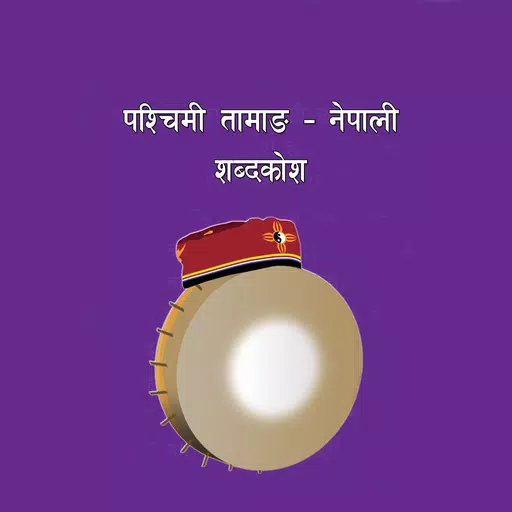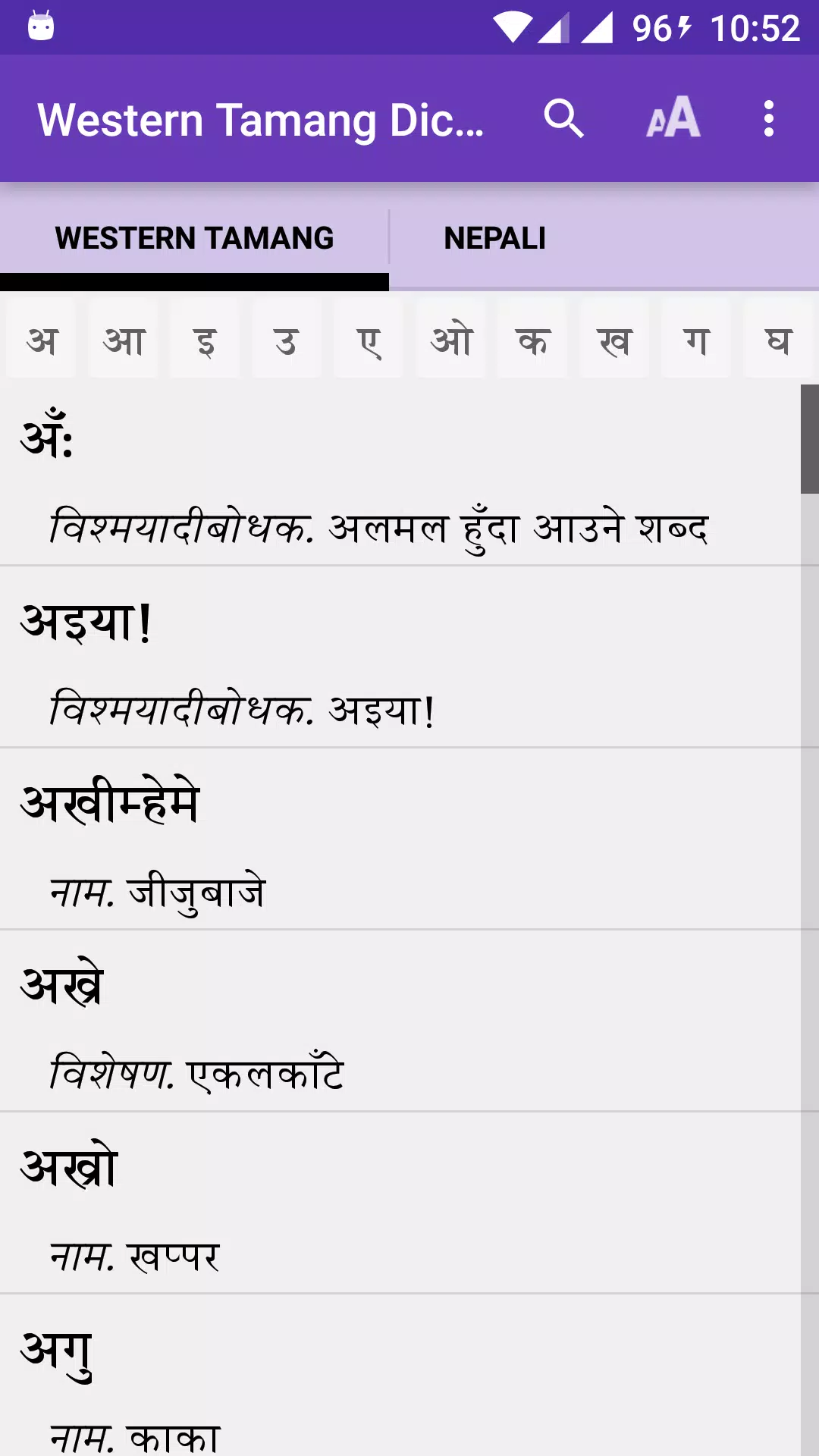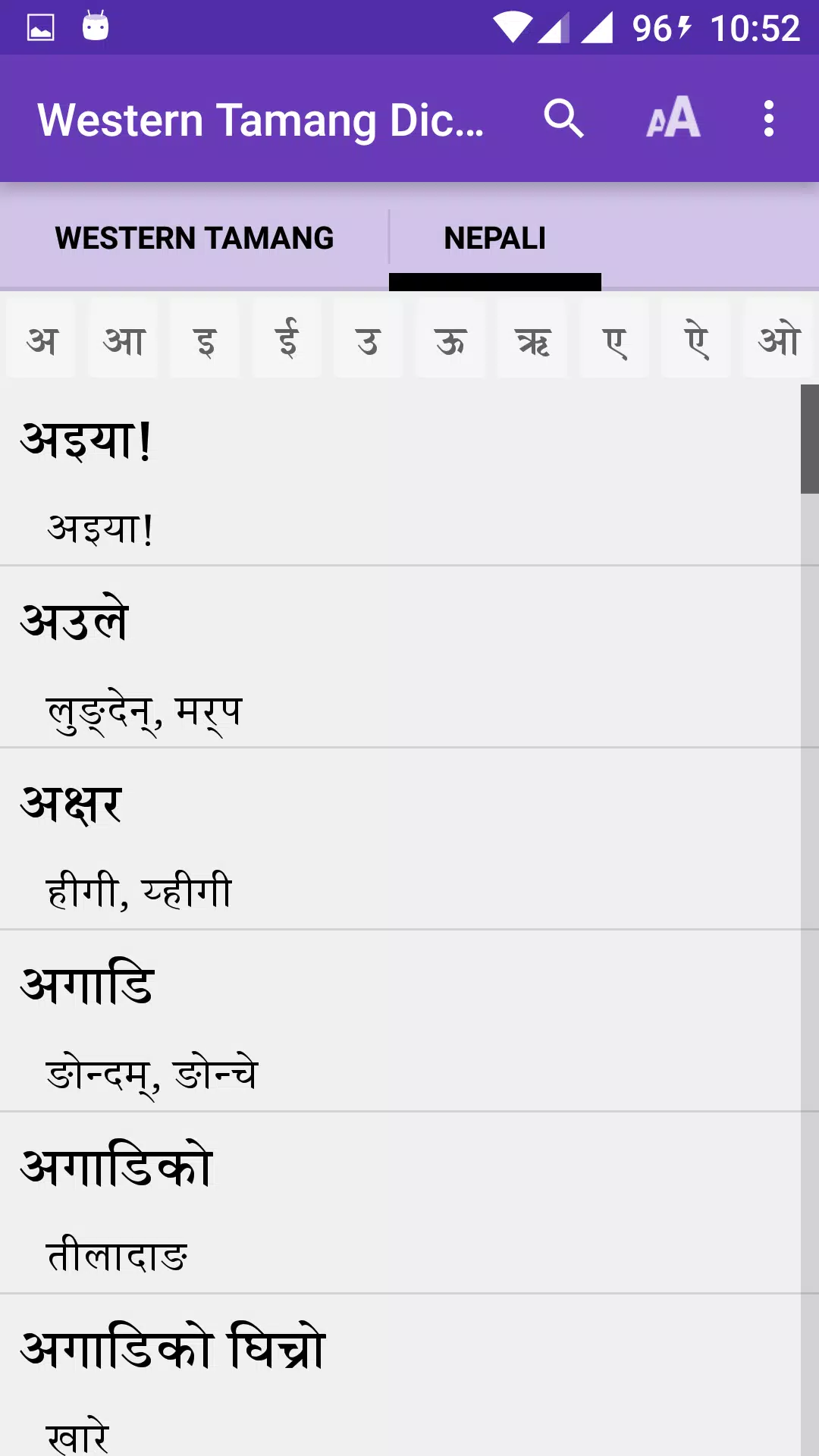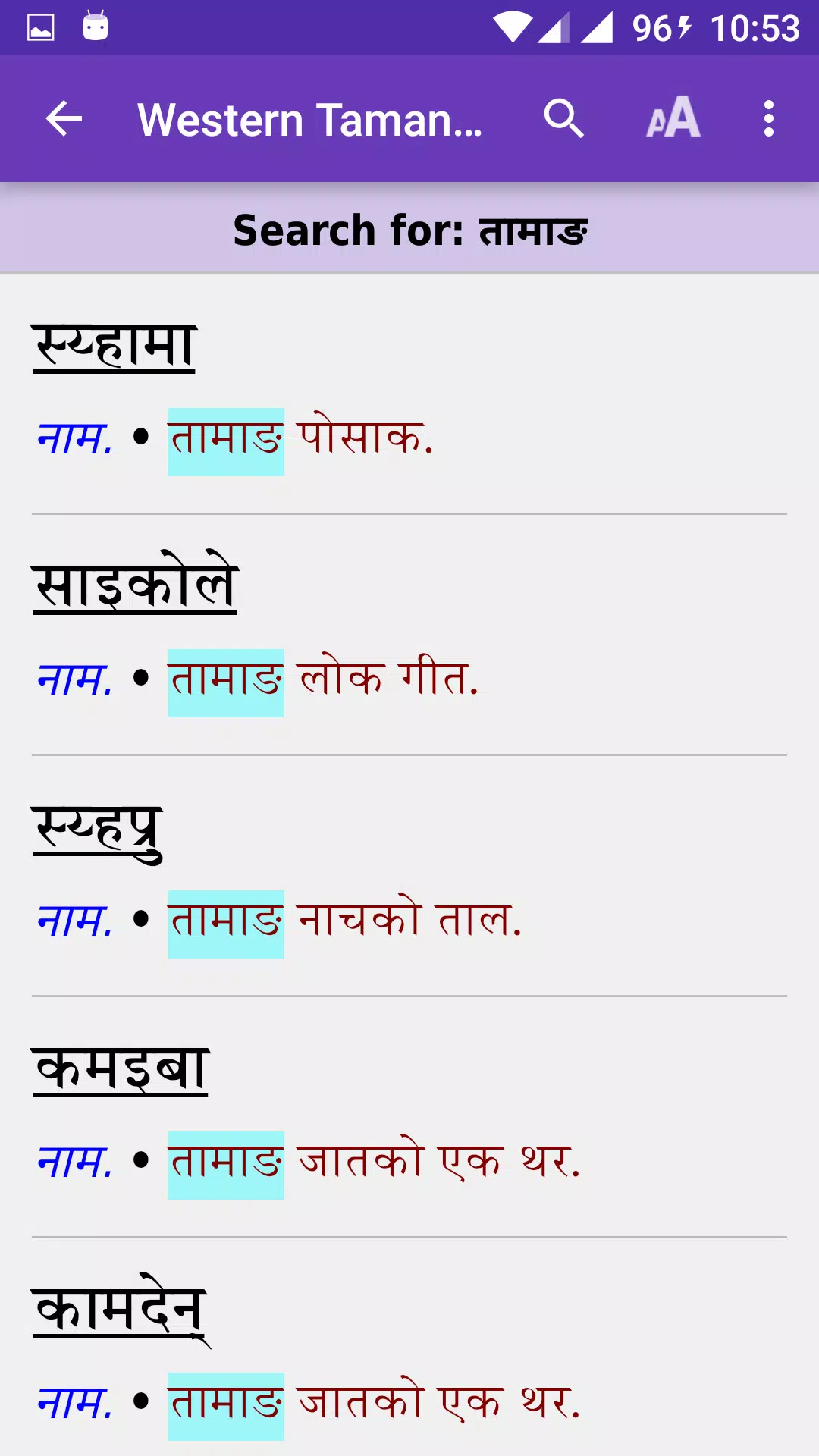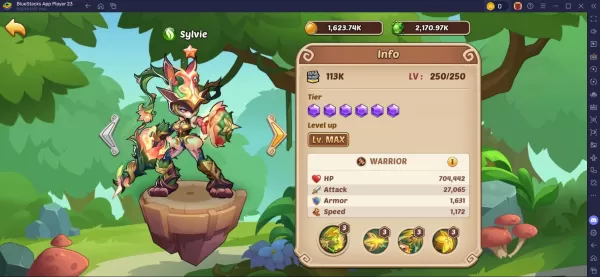Western Tamang - Nepali Dictionary
Tamang is a language spoken by the Tamang speech community. According to the 2011 Census of Nepal, Tamang ranks as the fifth most widely spoken language in the country, with 5.1 percent of the population identifying it as their primary language. It is part of the Tibeto-Burman branch of the Sino-Tibetan language family. The Tamang community predominantly resides around the Kathmandu Valley, but members of the ethnic group can be found across various districts of Nepal. In 2058 VS, the Nepal government recognized the Tamang as an indigenous ethnic community. This recognition was further solidified in the interim constitution of 2063 VS and the more recent constitution of 2072 VS, which designated Tamang as a national language.
The 'Do:ra song' narrates the migration of the Western Tamang people from Tibet into Nepal through 'Same' in the Himalayas. This migration story highlights the presence of Tamang communities in locations such as 'Rhirhap', 'Gyagarden', 'Bompo', 'Lambu', and just above 'Same'. In Tamang culture, there is a belief that the tail of the Earth is located in the north and the head in the south, which influences burial practices where the deceased's head is oriented southward before cremation. The term 'Same' is interpreted as 'the tail of the Earth' in Tamang culture, symbolizing a shift from the tail to the head.
Tamang language does not have a standardized grammar and is divided into two main dialects: Eastern Tamang and Western Tamang. Eastern Tamang, originating from the Langtang Himal region east of the Trisuli River, is also known as 'Syarba'. Western Tamang, spoken in districts such as Rasuwa, Nuwakot, Dhading, Gorkha, Lamjung, Chitawan, and Kanchanpur, is referred to as 'Nhurba' or 'Nhuppa'.
This bilingual dictionary is a collaborative effort by members of the Western Tamang speech community from the aforementioned districts. It serves as a tool for translating Western Tamang words into Nepali, aiding outsiders in comparative linguistic studies. However, the number of Western Tamang speakers is declining due to the pervasive influence of Nepali, the country's lingua franca. This shift poses a significant threat to the survival of Western Tamang as a mother tongue, making this dictionary a crucial resource for the preservation, promotion, and development of the language.
Continuous improvement is essential for the dictionary's growth and maturity. The Tamang speech community, along with stakeholders, readers, organizations, and other relevant authorities, are encouraged to provide valuable feedback and suggestions.
What's New in the Latest Version 1.7
Last updated on Sep 29, 2024
- Updated on July 30, 2024
- New Android SDK integration

